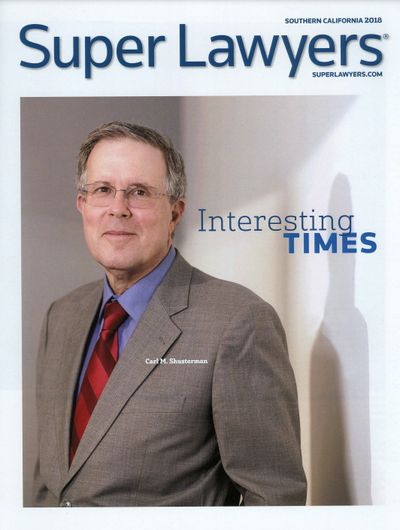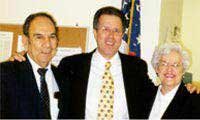
US immigration law allows 140,000 persons annually to obtain green cards through employment. This number includes both the principal worker and immediate family members (spouse and unmarried children). However, in FY2021, the number rose to 261,000, and in FY2022, the number is approximately 281,000.
Persons born in a particular country cannot use more than 7% of the quota in any of the 5 employment-based (EB) categories. This has led to long backlogs in the EB categories for persons born in India and mainland China.
When will your priority date become current? See our Visa Bulletin Predictions page.
Before an EB-2 or EB-3 preference petition on behalf of a prospective immigrant can be submitted to the US Citizenship and Immigration Service (USCIS), an employer generally must obtain the approval of a PERM application from the US Department of Labor. This represents a determination by the Secretary of Labor that no minimally-qualified US workers are ready, willing and able to fill the job, and that the employment of an immigrant will not adversely affect the wages and working conditions of US workers.
There are a number of exceptions to the PERM requirement.
Client Reviews

Great Work!
“We are very pleased by the services we get from the Law Offices of Carl Shusterman. Our experience in the past year with all our H1B renewals has been amazing, and we’ve obtained great results.”
- KRG Technologies
Read More Reviews
Zoom Consultations Available!
Green Card Through Employment is divided into the following sub-topics:
- Success Stories – Green Card Through Employment
- Videos – Green Card Through Employment
- EB-1 Priority Workers
- EB-2 Professionals with Advanced Degrees and Persons of Exceptional Ability
- EB-3 Professionals, Skilled and Unskilled Workers
- EB-4 Special Immigrants and Religious Workers
- EB-5 Investors
- Green Card Through Employment Resources
Success Stories – Green Card Through Employment

- Options for an Extraordinary Employee
- Saving a Client from an EB-5 Denial
- Overturning the Denial of a PERM Application
- Winning an I-140 Appeal
- Overcoming the Denial of an I-140 Petition
- Saving a Client’s Job
- Registered Nurse Upgrades from EB-2 to EB-3
- Representing Clients in Various Cities Across the U.S.
- Helping a Person Qualify for a National Interest Waiver
- Helping a Physician Achieve Permanent Residence
- Green Card for a Person of Extraordinary Ability
- Helping a Client Qualify as an EB-1 Outstanding Researcher
- Erroneous I-140 Denial is Overturned
- Saving a Science Superstar from Deportation
- Establishing That a Job Offer is Permanent
- Saving a Nurse From Being Deported
- Helping a Nurse Remain in the U.S.
- Helping an Immigrant Overcome Attorney Error
- Saving a Scientist’s NIW from Revocation
- A Hardship Waiver for a Physician
- Repairing a Broken Immigration Case
- Registered Nurse: “It Never Hurts to Ask”
- Researcher and Systems Engineer: “What a Difference a Day Made”
- Professional Athlete – “Curveball: The Immigration Officer Who Knew Too Much”
- Employment-Based Immigration: Cancer Research Center
- Physician/Researcher: “Who is Extraordinary?”
- Employment-Based Immigration: 100 Registered Nurses
- Engineers and Nurses
- Physician: Exceptional Hardship – Mexican Immigrant: Alternate Chargeability
- Artist Wins Right to Stay in US
Videos – Green Card Through Employment
- How to Obtain a Green Card Through Employment – Immigration Attorney Carl Shusterman (former INS Attorney, 1976-82) explains the EB-1, EB-2, EB-3 and EB-4 preference categories and how to obtain permanent residence through each of these categories. He describes the PERM process, national interest waivers and Schedule A occupations.
Green Cards Through Employment: An Overview – Overview concerning employment-based immigration to the United States.
- Visa Bulletin: Employment-Based Categories – Explains the movement of the employment-based priority dates on the monthly State Department Visa Bulletin.
EB-1 Priority Workers
(28.6% of the worldwide level of visas, or approximately 40,000 visas PLUS unused special immigrant and investor visas, if any)
Priority workers include (A) persons of extraordinary ability, (B) outstanding professors and researchers, and (C) certain executives and managers of multinational corporations.
A person’s extraordinary ability in the arts, sciences, business, education, or athletics must be demonstrated by sustained national or international acclaim, and his achievements must have been recognized in his field through extensive documentation. He must be entering the US to continue work in his area of extraordinary ability, and his entry must substantially benefit prospectively the US.
To qualify as an outstanding professor or researcher, a person must (1) be recognized internationally as outstanding in a specific academic area; (2) have at least three years of teaching or research in the academic area; and (3) seek to enter the US for (a) a tenured or tenure-track position within a university or other institute of higher education to teach in the academic area.
A multinational executive or manager must have been employed abroad as such during at least one of the three years preceding his application for priority worker classification and admission into the US as a priority worker. He must be entering the US to be employed as an executive or manager for the same firm, corporation or legal entity (or to a subsidiary or affiliate thereof) that employed him abroad.
EB-2 Professionals with Advanced Degrees and Persons of Exceptional Ability
(28.6% of the worldwide level of visas, or approximately 40,000 visas PLUS unused visas from priority worker category, if any)
These visas are reserved for qualified immigrants who are (1) members of the professions holding advanced degrees or their equivalent, or (2) those who are of exceptional ability in the sciences, arts, or business. It is required that such immigrants will substantially benefit prospectively the national economy, cultural or educational interests of the U.S. and that their services are sought by an employer in the US.
In determining whether a person is of exceptional ability, the possession of a degree or license does not, by itself, constitute sufficient evidence of such ability.
Unlike a priority worker, a person may immigrate to the US under this category only after his employer has obtained a PERM labor certification for his job. The employer must demonstrate that the minimum educational requirement for the job is an advanced degree. A person holding a bachelor’s degree and five years of professional experience may be considered to possess the equivalent of an advanced degree.
However, where it is deemed to be in the national interest, the USCIS may waive the requirements of a job offer and a PERM labor certification.
EB-3 Professionals, Skilled and Unskilled Workers
(28.6% of the worldwide level of visas, or approximately 40,000 visas PLUS unused visas from the two preceding categories, if any)
A person is a qualified professional under this category if he holds a baccalaureate degree or equivalent experience and is a member of the professions.
A skilled worker is a person capable of performing an occupation which requires at least 2 years of training or experience, not of a temporary or seasonal nature, for which qualified workers are not available in the US.
Other workers are those who are capable of performing unskilled labor, not of a temporary or seasonal nature, for which qualified workers are not available in the US.
Skilled workers, professionals and other workers may immigrate to the US only after their employers obtain PERM labor certifications for their jobs. Unskilled workers are limited to no more than 10,000 visas per year under this category. This limitation has resulted in increased waiting times for housekeepers and other unskilled workers.
EB-4 Special Immigrants and Religious Workers
(7.1% of the worldwide level of visas, or approximately 10,000 visas)
This category includes religious workers, special immigrant juveniles (SIJs) and a variety of other special immigrants..
EB-5 Investors
(7.1% of the worldwide level of visas, or approximately 10,000 visas)
Persons who invest a certain of money in a business or regional center in the US and who create a minimum of 10 jobs for US workers can obtain permanent residence in the US through the EB-5 Investors Program.
Green Card Through Employment Resources
- How to Make an Expedite Request (USCIS)
- Employment-Based Immigration – USCIS Policy Manual
- Fiscal Year 2024 Employment-Based Adjustment of Status FAQs (12-8-23)
- Fiscal Year 2023 Employment-Based Adjustment of Status FAQs (9-8-22)
- USCIS to Implement Premium Processing for Certain Previously Filed EB-1 and EB-2 Form I-140 Petitions (5-24-22)
- Responding to a Request for Evidence
- Employment-Based Adjustment of Status through Section 245(k)
- Employment Authorization Documents (EADs)
